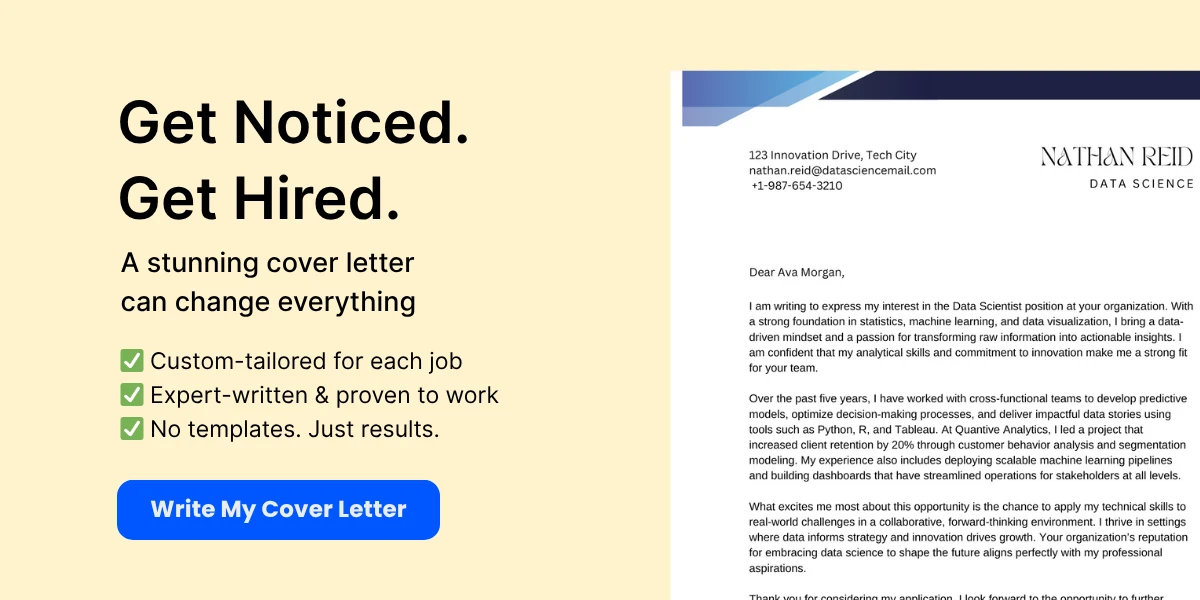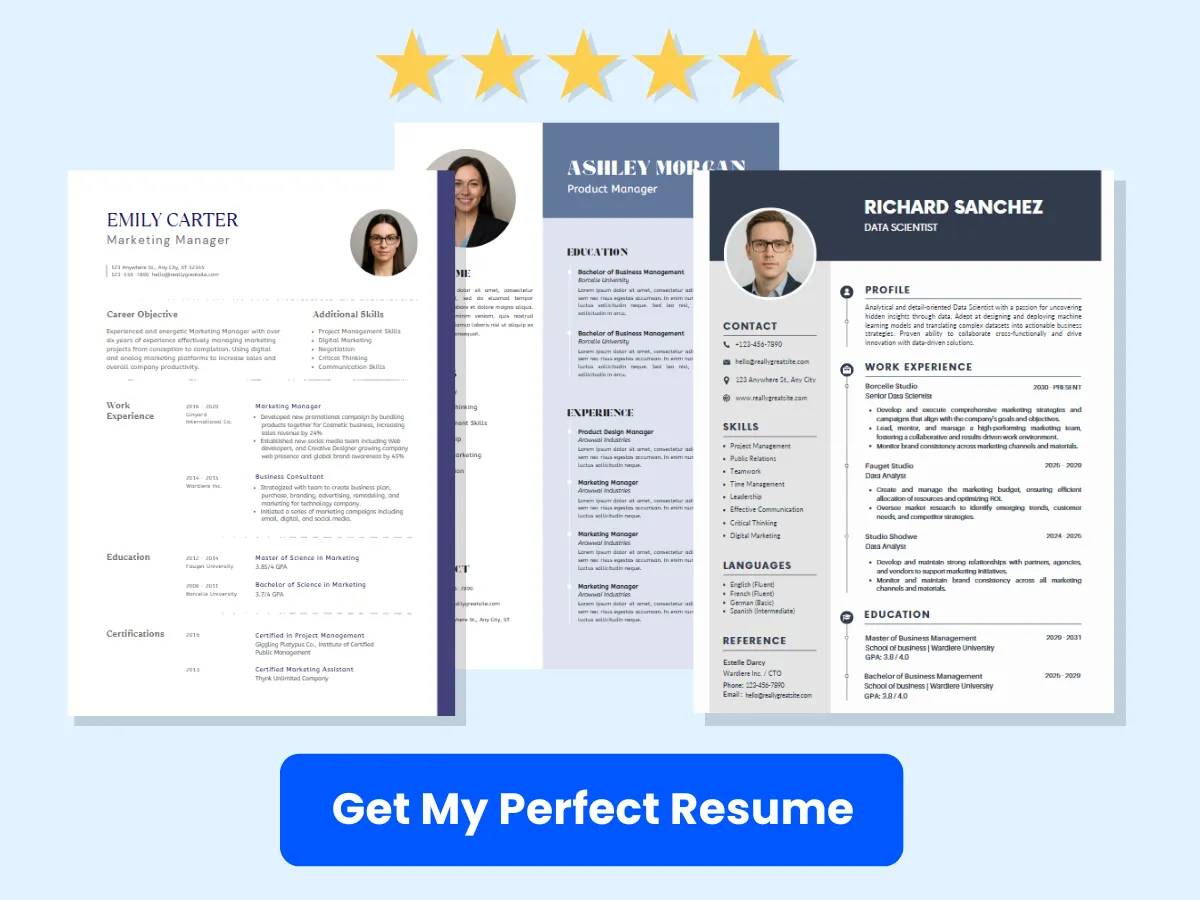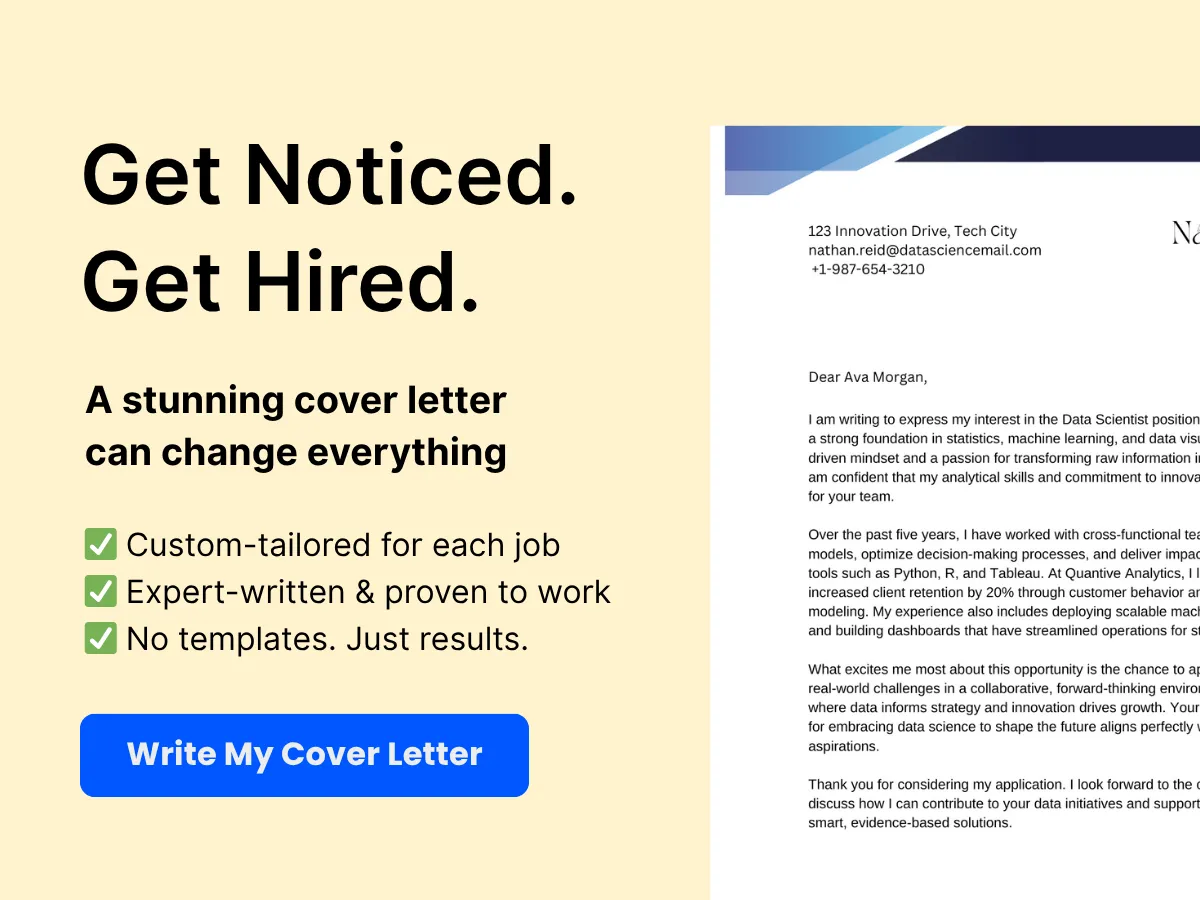A well-crafted work portfolio is more than just a collection of your best work; it’s a powerful tool that showcases your skills, creativity, and professional journey. Whether you’re a seasoned professional, a recent graduate, or someone looking to pivot careers, having a portfolio can set you apart from the crowd and provide tangible evidence of your capabilities.
A work portfolio is essential for anyone looking to make a strong impression on potential employers or clients. It not only highlights your achievements but also reflects your personal brand and work ethic. From graphic designers and writers to marketers and developers, a thoughtfully curated portfolio can open doors to new opportunities and collaborations.
In this comprehensive guide, we will explore the key elements of creating an effective work portfolio. You’ll discover practical tips for selecting and presenting your work, inspiring examples from various fields, and a step-by-step approach to building a portfolio that resonates with your target audience. By the end of this article, you’ll be equipped with the knowledge and tools to create a standout portfolio that truly represents your professional identity.
Exploring the Basics
Definition of a Work Portfolio
A work portfolio is a curated collection of an individual’s work that showcases their skills, experiences, and accomplishments. It serves as a visual representation of a person’s professional journey, allowing potential employers, clients, or collaborators to assess their capabilities and expertise. Unlike a traditional resume, which primarily lists job titles and responsibilities, a portfolio provides tangible evidence of a person’s work, often including samples, case studies, and testimonials. This makes it an invaluable tool for job seekers, freelancers, and professionals looking to advance their careers.
Types of Work Portfolios
Physical Portfolios
Physical portfolios are tangible collections of work that can be presented in person. They often come in the form of binders, folders, or printed books. Physical portfolios are particularly useful in fields where visual presentation is crucial, such as graphic design, photography, or architecture. Here are some key characteristics and benefits of physical portfolios:


- Tactile Experience: A physical portfolio allows the viewer to engage with the materials directly, providing a more immersive experience.
- Personal Touch: The ability to customize the layout and design of a physical portfolio can reflect the creator’s personality and style.
- Controlled Environment: Presenting a physical portfolio in a controlled setting, such as an interview or a networking event, allows for direct interaction and discussion about the work.
However, physical portfolios also have limitations. They can be cumbersome to transport, may require updates and reprints, and lack the accessibility and reach of digital formats.
Digital Portfolios
Digital portfolios have become increasingly popular due to the rise of technology and the internet. They can take various forms, including personal websites, online platforms, or PDF documents. Digital portfolios offer several advantages:
- Accessibility: Digital portfolios can be easily shared via email or social media, allowing for a broader audience reach.
- Multimedia Integration: They can incorporate various media types, such as videos, animations, and interactive elements, enhancing the presentation of work.
- Easy Updates: Digital portfolios can be updated quickly and efficiently, ensuring that the most current work is always showcased.
However, creating a digital portfolio requires some technical skills, and it may be challenging to stand out in a crowded online space. Nevertheless, the benefits often outweigh the challenges, making digital portfolios a preferred choice for many professionals.
Key Components of a Work Portfolio
Regardless of the type of portfolio you choose to create, certain key components are essential for making a strong impression. Here are the critical elements to include in your work portfolio:
1. Introduction or Personal Statement
Your portfolio should begin with an introduction or personal statement that outlines who you are, your professional background, and your career goals. This section sets the tone for the rest of the portfolio and provides context for your work. Aim to convey your passion, values, and what makes you unique in your field.
2. Table of Contents
For larger portfolios, including a table of contents can help guide the viewer through your work. This is especially useful for physical portfolios, where flipping through pages can be cumbersome. A well-organized table of contents allows the viewer to quickly locate specific projects or sections of interest.


3. Work Samples
The heart of any portfolio is the work samples. Choose a diverse range of projects that showcase your skills and versatility. Each sample should include:
- Title and Description: Provide a clear title and a brief description of the project, including your role and the objectives.
- Visuals: Include high-quality images, screenshots, or videos that represent the work effectively. Ensure that the visuals are well-organized and visually appealing.
- Results and Impact: Whenever possible, quantify the results of your work. For example, mention how a design increased user engagement by a certain percentage or how a marketing campaign led to a specific revenue increase.
4. Case Studies
In addition to work samples, consider including case studies that provide a deeper insight into your process and problem-solving abilities. A case study should detail:
- The Challenge: Describe the problem or challenge you faced.
- Your Approach: Explain the steps you took to address the challenge, including research, brainstorming, and execution.
- The Outcome: Share the results and any feedback received, highlighting your contributions and the impact of your work.
5. Testimonials and References
Including testimonials from clients, colleagues, or supervisors can add credibility to your portfolio. Positive feedback reinforces your skills and work ethic, making a compelling case for your capabilities. If possible, include the name, title, and company of the person providing the testimonial to enhance authenticity.
6. Resume or CV
While your portfolio showcases your work, including a resume or CV provides a comprehensive overview of your professional history. This should include your education, work experience, skills, and any relevant certifications. Ensure that your resume is up-to-date and aligns with the work presented in your portfolio.
7. Contact Information
Finally, make it easy for potential employers or clients to reach you by including your contact information. This should include your email address, phone number, and links to your professional social media profiles (such as LinkedIn). If you have a personal website, include that as well.


8. Additional Sections
Depending on your field and personal preferences, you may want to include additional sections in your portfolio, such as:
- Professional Development: Courses, workshops, or certifications that enhance your skills.
- Volunteer Work: Relevant volunteer experiences that demonstrate your commitment and skills.
- Blog or Articles: Links to any articles or blog posts you’ve written that showcase your expertise.
By thoughtfully including these components, you can create a comprehensive work portfolio that effectively communicates your skills, experiences, and professional identity. Remember, the goal of your portfolio is not just to display your work but to tell your story and demonstrate your value to potential employers or clients.
Planning Your Work Portfolio
Identifying Your Goals
Creating a work portfolio is a strategic endeavor that requires careful planning and a clear understanding of your objectives. Before diving into the design and content of your portfolio, it’s essential to identify your goals. This will not only guide the direction of your portfolio but also help you curate content that resonates with your intended audience.
Career Advancement
If your primary goal is career advancement, your portfolio should showcase your skills, achievements, and professional growth. Highlight projects that demonstrate your ability to take on increasing responsibilities or lead initiatives. For instance, if you’re in marketing, include case studies of successful campaigns you’ve managed, emphasizing metrics like ROI and engagement rates. This not only illustrates your capabilities but also positions you as a valuable asset to potential employers.
Job Search
When using your portfolio as a tool for job searching, it’s crucial to tailor it to the specific roles you’re targeting. Research the job descriptions and identify the key skills and experiences that employers are looking for. For example, if you’re applying for a graphic design position, include a variety of design projects that showcase your versatility, creativity, and technical skills. Make sure to include a brief description of each project, your role, and the impact it had on the client or company.
Freelance Opportunities
For freelancers, a portfolio serves as a vital marketing tool. Your goal here is to attract clients by demonstrating your expertise and the quality of your work. Include a diverse range of projects that reflect your style and capabilities. For instance, if you’re a freelance writer, showcase articles, blog posts, and any other written content that highlights your ability to adapt to different tones and audiences. Additionally, consider including testimonials from previous clients to build credibility and trust.
Audience Analysis
Understanding your audience is a critical component of creating an effective work portfolio. By analyzing who will be viewing your portfolio, you can tailor your content to meet their specific needs and expectations.


Exploring Your Target Audience
Your target audience may vary depending on your goals. For instance, if you’re aiming for a corporate job, your audience will likely consist of hiring managers and recruiters. Conversely, if you’re a freelancer, your audience may include potential clients from various industries. Take the time to research your audience’s preferences, interests, and pain points. This will help you create a portfolio that speaks directly to them.
Tailoring Content to Audience Needs
Once you have a clear understanding of your audience, you can tailor your portfolio content accordingly. For example, if your target audience values innovation and creativity, consider showcasing projects that highlight your unique approach to problem-solving. Use language and visuals that resonate with them. If your audience is more data-driven, focus on metrics and results to demonstrate your impact. Remember, the goal is to create a connection with your audience and show them how you can meet their needs.
Portfolio Structure and Layout
The structure and layout of your portfolio play a significant role in how your work is perceived. A well-organized portfolio not only enhances readability but also makes it easier for your audience to navigate through your work.
Choosing the Right Format
There are various formats you can choose for your portfolio, including digital, print, or a combination of both. Digital portfolios are increasingly popular due to their accessibility and ease of sharing. You can create a personal website, use platforms like Behance or Dribbble, or even utilize social media to showcase your work. Ensure that your digital portfolio is mobile-friendly, as many users will access it from their smartphones or tablets.
If you opt for a print portfolio, consider the quality of materials and the overall presentation. A well-designed print portfolio can leave a lasting impression during in-person interviews or networking events. Regardless of the format you choose, ensure that it aligns with your personal brand and the expectations of your target audience.
Organizing Your Content
Once you’ve chosen a format, the next step is to organize your content effectively. Start with a strong introduction that outlines who you are and what you do. This could include a brief bio, your professional philosophy, or a summary of your skills and experiences.


Next, categorize your work into sections that make sense for your audience. For example, you might have sections for different types of projects, such as:
- Design Projects: Showcase your best design work, including graphics, branding, and web design.
- Writing Samples: Include a variety of writing pieces, such as articles, blog posts, and marketing copy.
- Case Studies: Provide in-depth analyses of specific projects, detailing your role, the challenges faced, and the outcomes achieved.
- Testimonials: Feature quotes from clients or colleagues that speak to your skills and work ethic.
Each section should be clearly labeled and easy to navigate. Use high-quality images and ensure that any text is concise and free of jargon. Remember, your portfolio is a reflection of your professionalism, so attention to detail is crucial.
Finally, consider including a contact section where potential employers or clients can reach you easily. This could include links to your LinkedIn profile, email address, or other relevant social media accounts.
Planning your work portfolio involves identifying your goals, analyzing your audience, and structuring your content effectively. By taking the time to understand what you want to achieve and who you’re trying to reach, you can create a compelling portfolio that showcases your skills and helps you stand out in a competitive job market.
Gathering Your Work Samples
Creating a compelling work portfolio is essential for showcasing your skills, experience, and creativity to potential employers or clients. One of the most critical steps in this process is gathering your work samples. This section will guide you through selecting your best work, understanding the types of work samples to include, and how to present them effectively.
Selecting Your Best Work
When it comes to selecting work samples for your portfolio, the mantra should always be “quality over quantity.” It’s better to have a few outstanding pieces than a large collection of mediocre work. Here are some key considerations to keep in mind:


Quality Over Quantity
Focus on showcasing your best work that highlights your skills and expertise. Ask yourself the following questions:
- What projects am I most proud of? Choose pieces that you feel represent your abilities and creativity.
- Which projects received positive feedback? Consider work that has been well-received by peers, clients, or supervisors.
- What work demonstrates my growth? Include samples that show how you have evolved in your field over time.
Remember, a portfolio filled with high-quality work will leave a stronger impression than a larger collection of average pieces. Aim for a selection that showcases a range of skills and styles, but ensure that each piece is polished and professional.
Relevance to Your Goals
Your portfolio should align with your career goals and the type of work you want to pursue. Tailor your selection based on the following:
- Target Audience: Consider who will be viewing your portfolio. If you’re applying for a specific job or client, include samples that are relevant to that position or project.
- Industry Standards: Research the types of work that are valued in your industry. For example, a graphic designer might include branding projects, while a writer might showcase articles or essays.
- Skills Highlight: Choose samples that highlight the skills you want to emphasize. If you’re looking to move into a management role, include projects where you led a team or managed a significant aspect of the work.
Types of Work Samples to Include
Different fields and professions have various types of work samples that can be included in a portfolio. Here are some common categories:
Written Work
If you are a writer, editor, or content creator, your portfolio should prominently feature your written work. This can include:
- Articles and Blog Posts: Showcase your ability to write engaging and informative content.
- Essays and Research Papers: Include academic or analytical pieces that demonstrate your critical thinking and writing skills.
- Copywriting Samples: If you have experience in advertising or marketing, include examples of persuasive copy that you’ve created.
When presenting written work, consider providing a brief summary of each piece, including the target audience, purpose, and any notable outcomes.


Visual Work
For those in creative fields such as graphic design, photography, or illustration, visual work is paramount. Types of visual work to include are:
- Design Projects: Include logos, branding materials, or web design samples that showcase your design skills.
- Photography: If you are a photographer, include a selection of your best images, categorized by type (e.g., portrait, landscape, event).
- Illustrations: Showcase your artistic style and technique through a variety of illustrations.
Visual work should be presented in high resolution, and it’s beneficial to include a brief description of each piece, explaining the concept, tools used, and the intended audience.
Multimedia Projects
In today’s digital landscape, multimedia projects are increasingly important. This can include:
- Video Content: If you have experience in video production, include links to promotional videos, tutorials, or documentaries you’ve created.
- Podcasts: If you’ve hosted or produced podcasts, include episodes that highlight your skills in audio production and storytelling.
- Interactive Media: Showcase any interactive projects, such as web applications or games, that demonstrate your technical skills.
For multimedia projects, provide context for each piece, including your role in the project, the tools used, and any measurable outcomes.
Case Studies and Reports
Case studies and reports are particularly valuable for professionals in fields such as marketing, consulting, and research. These samples should include:
- Project Overviews: Provide a detailed account of a project you worked on, including the objectives, your role, and the results achieved.
- Data Analysis: If applicable, include reports that showcase your ability to analyze data and draw actionable insights.
- Client Testimonials: Incorporate feedback from clients or stakeholders to add credibility to your work.
When presenting case studies, structure them clearly, outlining the problem, solution, and results, and use visuals to enhance understanding.
How to Present Work Samples
Once you have gathered your work samples, the next step is to present them effectively. The way you showcase your work can significantly impact how it is perceived. Here are some tips for presenting your work samples:
Context and Background Information
Providing context is crucial for helping viewers understand the significance of your work. For each sample, include:
- Project Background: Briefly explain the project’s purpose, the problem it aimed to solve, and your role in it.
- Target Audience: Describe who the work was intended for and how it was received by that audience.
- Tools and Techniques: Mention any specific tools, software, or techniques you used to create the work.
This information not only adds depth to your portfolio but also demonstrates your thought process and strategic thinking.
Results and Impact
Highlighting the results and impact of your work is essential for showcasing your effectiveness. Include:
- Measurable Outcomes: Whenever possible, provide data or metrics that demonstrate the success of your work (e.g., increased sales, improved engagement rates).
- Client Feedback: Incorporate testimonials or quotes from clients or colleagues that speak to the quality and impact of your work.
- Lessons Learned: Reflect on what you learned from each project and how it has influenced your approach to future work.
By presenting your work samples with context and results, you not only showcase your skills but also tell a compelling story about your professional journey.
Creating Your Work Portfolio
Tools and Platforms
Website Builders
In the digital age, having an online portfolio is essential for showcasing your work to potential employers or clients. Website builders like Wix, Squarespace, and Weebly offer user-friendly interfaces that allow you to create a professional-looking portfolio without needing extensive coding knowledge. These platforms provide customizable templates tailored for portfolios, enabling you to highlight your skills and projects effectively.
For instance, Wix offers a drag-and-drop feature that makes it easy to arrange your content visually. You can choose from various layouts, colors, and fonts to match your personal brand. Squarespace, on the other hand, is known for its sleek, modern designs that are particularly appealing to creative professionals. It also includes built-in analytics to track visitor engagement, which can be invaluable for understanding your audience.
Portfolio Apps
If you prefer a more mobile-friendly approach, portfolio apps like Behance, Portfoliobox, and Adobe Portfolio can be excellent choices. Behance, part of the Adobe family, allows you to showcase your work in a community-driven environment, where you can connect with other creatives and potential clients. Portfoliobox offers a free version that includes various templates and tools to help you create a visually appealing portfolio quickly.
Adobe Portfolio is particularly beneficial for those already using Adobe Creative Cloud, as it integrates seamlessly with other Adobe applications. This allows you to easily import your work from Photoshop, Illustrator, and other Adobe tools, streamlining the process of building your portfolio.
Traditional Methods
While digital portfolios are increasingly popular, traditional methods still hold value, especially in certain industries. A physical portfolio can make a strong impression during in-person interviews or meetings. Consider using a high-quality binder or folder to present your work. This method allows for tactile engagement, which can be memorable for your audience.
When creating a physical portfolio, focus on the quality of your printed materials. Use high-resolution images and professional printing services to ensure your work looks its best. Additionally, consider including a business card or a resume in your portfolio to provide a comprehensive view of your professional background.
Step-by-Step Guide to Building a Digital Portfolio
Choosing a Platform
The first step in creating a digital portfolio is selecting the right platform. Consider your technical skills, the type of work you want to showcase, and your target audience. If you are comfortable with coding, you might opt for a more customizable solution like WordPress. For those who prefer a straightforward approach, website builders like Wix or Squarespace are ideal.
Evaluate the features each platform offers, such as SEO capabilities, mobile responsiveness, and e-commerce options if you plan to sell your work. Additionally, consider the cost of each platform, as some may have monthly fees or transaction costs.
Designing Your Portfolio
Once you’ve chosen a platform, it’s time to design your portfolio. Start by selecting a template that aligns with your personal brand and the type of work you do. Ensure that the design is clean and professional, allowing your work to take center stage.
Pay attention to color schemes, typography, and layout. Consistency is key; use the same fonts and colors throughout your portfolio to create a cohesive look. Make sure your design is user-friendly, with easy navigation that allows visitors to find your work quickly.
Uploading and Organizing Work Samples
After designing your portfolio, begin uploading your work samples. Choose a diverse range of projects that showcase your skills and versatility. For example, if you are a graphic designer, include logos, brochures, and web designs. If you are a writer, feature articles, essays, and any published work.
Organize your samples into categories or projects to make it easier for viewers to navigate. Consider using a grid layout for visual appeal, and ensure that each piece is high-quality and properly formatted. You might also want to include a featured project section to highlight your best work.
Adding Descriptions and Context
Simply displaying your work is not enough; providing context is crucial. For each project, include a brief description that outlines your role, the objectives, and the outcomes. This helps potential employers or clients understand your thought process and the impact of your work.
For example, if you designed a website for a local business, explain the goals of the project, the challenges you faced, and how your design improved the business’s online presence. Use storytelling techniques to engage your audience and make your work memorable.
Step-by-Step Guide to Building a Physical Portfolio
Selecting a Binder or Folder
When creating a physical portfolio, the first step is selecting the right binder or folder. Choose a professional-looking option that reflects your personal style. Options range from simple black binders to more elaborate leather portfolios. Ensure that it is durable and can hold your work securely.
Printing and Arranging Work Samples
Next, print your work samples. Use high-quality paper and a professional printing service to ensure that your work looks polished. Arrange your samples in a logical order, such as chronologically or by project type. This organization will help guide your audience through your work seamlessly.
Consider using plastic sleeves to protect your work and keep it in pristine condition. This also allows for easy swapping of pieces if you want to update your portfolio regularly.
Adding Labels and Descriptions
Finally, add labels and descriptions to your work samples. Each piece should have a title and a brief description that provides context, similar to a digital portfolio. This information can include the project’s purpose, your role, and any notable achievements.
In addition to descriptions, consider including a table of contents at the beginning of your portfolio. This will help viewers navigate your work more easily and give them an overview of what to expect.
Examples of Effective Work Portfolios
Case Studies of Successful Portfolios
Example 1: Graphic Designer
One of the most compelling examples of a graphic designer’s portfolio is that of Jessica Walsh, a partner at the renowned design firm Sagmeister & Walsh. Her portfolio is a vibrant showcase of her creativity and versatility. It features a mix of personal projects, client work, and collaborative pieces, all presented in a visually striking manner.
Walsh’s portfolio is effective for several reasons:
- Visual Appeal: The use of bold colors, dynamic layouts, and engaging typography immediately captures the viewer’s attention.
- Variety of Work: By including a range of projects—from branding to advertising—Walsh demonstrates her ability to tackle different design challenges.
- Contextual Information: Each project is accompanied by a brief description that outlines the problem, her approach, and the outcome, providing insight into her design thinking process.
Walsh’s portfolio not only showcases her skills but also tells a story about her journey as a designer, making it a powerful tool for attracting potential clients and collaborators.
Example 2: Writer
For writers, a portfolio can take many forms, but one standout example is Elna Cain, a freelance writer who specializes in content marketing. Her portfolio is hosted on her personal website and features a clean, easy-to-navigate layout that highlights her writing samples.
Key elements that make Cain’s portfolio effective include:
- Curated Samples: Cain carefully selects her best work, showcasing a variety of writing styles and formats, including blog posts, articles, and web copy.
- Client Testimonials: Including testimonials from satisfied clients adds credibility and demonstrates her ability to deliver quality work.
- Clear Call to Action: Cain’s portfolio includes a prominent contact form, making it easy for potential clients to reach out for inquiries or collaborations.
By presenting her work in a professional manner and providing social proof, Cain effectively positions herself as a skilled writer in her niche.
Example 3: Photographer
Photographer Daniel Kordan has created a stunning portfolio that showcases his breathtaking landscape photography. His website is visually driven, allowing the images to speak for themselves while also providing context through thoughtful captions.
What makes Kordan’s portfolio stand out includes:
- High-Quality Imagery: The use of high-resolution images allows viewers to appreciate the details and beauty of his work.
- Organized Galleries: Kordan organizes his work into themed galleries, such as “Wilderness” and “Seascapes,” making it easy for visitors to navigate and find specific types of photography.
- Behind-the-Scenes Insights: Kordan occasionally shares stories about his adventures and the techniques he used to capture certain shots, adding depth to his portfolio.
This combination of stunning visuals and engaging storytelling not only showcases Kordan’s technical skills but also his passion for photography, making his portfolio a compelling representation of his brand.
Example 4: Web Developer
Web developer Sarah Drasner has an impressive portfolio that highlights her expertise in front-end development and design. Her website is not only a showcase of her work but also a demonstration of her coding skills.
Drasner’s portfolio is effective due to the following factors:
- Interactive Elements: The portfolio features interactive components that allow visitors to experience her coding abilities firsthand, such as animations and transitions.
- Project Descriptions: Each project includes a detailed description of the technologies used, the challenges faced, and the solutions implemented, providing insight into her problem-solving skills.
- Blog Section: Drasner maintains a blog where she shares tutorials and insights about web development, establishing her as a thought leader in her field.
By combining her portfolio with educational content, Drasner not only showcases her work but also builds a community around her expertise, making her portfolio a valuable resource for both potential clients and fellow developers.
Analysis of What Makes These Portfolios Effective
When analyzing the portfolios of Jessica Walsh, Elna Cain, Daniel Kordan, and Sarah Drasner, several common themes emerge that contribute to their effectiveness:
- Visual Design: Each portfolio is visually appealing and reflects the creator’s personal brand. The use of color, typography, and layout is carefully considered to enhance the overall presentation.
- Curated Content: The portfolios feature a selection of the creator’s best work, demonstrating their skills and versatility without overwhelming the viewer with too much information.
- Contextual Information: Providing context for each project helps potential clients understand the creator’s thought process, problem-solving abilities, and the impact of their work.
- Social Proof: Testimonials, case studies, and client logos add credibility and trustworthiness, making it easier for potential clients to feel confident in their decision to hire the creator.
- Clear Navigation: An intuitive layout and easy navigation ensure that visitors can quickly find the information they are looking for, enhancing the user experience.
- Call to Action: Each portfolio includes a clear call to action, encouraging potential clients to reach out for inquiries or collaborations.
By incorporating these elements, creators can build effective portfolios that not only showcase their work but also tell a compelling story about their skills, experiences, and professional journey.
Maintaining and Updating Your Portfolio
Creating a work portfolio is just the first step in showcasing your skills and achievements. To ensure that your portfolio remains relevant and effective, it is crucial to maintain and update it regularly. This section will delve into the importance of regular updates, how to track your portfolio’s performance, and how to respond to feedback to enhance your portfolio’s impact.
Regular Updates
Your portfolio is a living document that should evolve alongside your career. Regular updates not only keep your portfolio fresh but also reflect your growth and adaptability in your field. Here’s how to approach updates effectively:
How Often to Update
Determining how often to update your portfolio can depend on several factors, including your industry, the frequency of your projects, and personal career milestones. Here are some guidelines:
- After Major Projects: Update your portfolio immediately after completing significant projects. This ensures that your most recent work is always showcased.
- Quarterly Reviews: Set a schedule to review your portfolio every three months. This allows you to assess your work and make necessary updates.
- Annual Overhaul: At least once a year, conduct a comprehensive review of your portfolio. This is a good time to remove outdated work, add new projects, and refine your presentation.
What to Update
When updating your portfolio, consider the following elements:
- New Projects: Always add new work that demonstrates your current skills and expertise. This could include completed projects, freelance work, or volunteer experiences.
- Skills and Certifications: If you’ve acquired new skills or certifications, make sure to include them. This shows your commitment to professional development.
- Testimonials and Recommendations: Incorporate new testimonials from clients or colleagues that speak to your abilities and work ethic. Positive feedback can significantly enhance your portfolio’s credibility.
- Visuals and Presentation: As design trends evolve, consider refreshing the layout and visuals of your portfolio. A modern, clean design can make a significant difference in how your work is perceived.
Tracking Your Portfolio’s Performance
Understanding how your portfolio performs can provide valuable insights into its effectiveness. By tracking specific metrics, you can identify areas for improvement and make informed decisions about future updates.
Metrics to Monitor
Here are some key metrics to consider when evaluating your portfolio’s performance:
- Visitor Analytics: Use tools like Google Analytics to track how many people visit your portfolio, where they come from, and how long they stay. This data can help you understand your audience better.
- Engagement Rates: Monitor how visitors interact with your portfolio. Are they clicking on your projects? Are they spending time on specific sections? High engagement rates can indicate that your content resonates with viewers.
- Conversion Rates: If your goal is to attract clients or job offers, track how many visitors take action after viewing your portfolio, such as contacting you or requesting a quote.
- Social Media Shares: If you share your portfolio on social media, track how often it gets shared or liked. This can give you insight into how well your work is received by your network.
Tools for Tracking Performance
Several tools can help you monitor your portfolio’s performance effectively:
- Google Analytics: A powerful tool for tracking website traffic and user behavior. Set up goals to measure conversions and engagement.
- Hotjar: This tool provides heatmaps and session recordings, allowing you to see how users interact with your portfolio. It can help identify areas that may need improvement.
- Social Media Analytics: Platforms like Facebook, Twitter, and LinkedIn offer insights into how your posts perform. Use these analytics to gauge interest in your portfolio when shared on social media.
- Portfolio Platforms: If you use platforms like Behance or Dribbble, they often provide built-in analytics to track views, likes, and comments on your work.
Responding to Feedback
Feedback is an invaluable resource for improving your portfolio. Whether it comes from peers, mentors, or clients, constructive criticism can help you refine your presentation and content.
How to Gather Feedback
To effectively gather feedback on your portfolio, consider the following methods:
- Peer Reviews: Share your portfolio with trusted colleagues or friends in your industry. Ask them to provide honest feedback on both the content and design.
- Mentorship Sessions: If you have a mentor, schedule a session to review your portfolio together. Their experience can provide valuable insights.
- Client Surveys: After completing a project, ask clients for feedback on your portfolio. What drew them to your work? What could be improved?
- Online Forums and Communities: Participate in online forums or social media groups related to your field. Share your portfolio and ask for feedback from a broader audience.
Implementing Feedback
Once you’ve gathered feedback, it’s essential to take actionable steps to implement it:
- Prioritize Feedback: Not all feedback will be equally valuable. Prioritize suggestions that align with your goals and the overall message of your portfolio.
- Make Incremental Changes: Instead of overhauling your entire portfolio based on feedback, make incremental changes. This allows you to test the effectiveness of each adjustment.
- Follow Up: If you received feedback from specific individuals, consider following up with them after making changes. This shows that you value their input and are committed to improvement.
- Document Changes: Keep a record of the feedback you receive and the changes you make. This can help you track your portfolio’s evolution and provide insights for future updates.
By maintaining and updating your portfolio regularly, tracking its performance, and responding to feedback, you can ensure that your work portfolio remains a powerful tool for showcasing your skills and attracting new opportunities.
Promoting Your Work Portfolio
Creating a work portfolio is just the first step in showcasing your skills and achievements. To truly leverage your portfolio, you need to promote it effectively. This section will explore various online and offline strategies to help you get your work in front of the right audience.
Online Promotion Strategies
In today’s digital age, online promotion is essential for reaching a wider audience. Here are some effective strategies to consider:
Social Media
Social media platforms are powerful tools for promoting your work portfolio. They allow you to connect with potential clients, employers, and peers in your industry. Here are some tips for using social media effectively:
- Choose the Right Platforms: Depending on your field, certain platforms may be more beneficial than others. For instance, visual artists may find Instagram and Pinterest more effective, while writers might prefer Twitter and LinkedIn.
- Share Engaging Content: Regularly post updates about your work, including snippets from your portfolio, behind-the-scenes looks at your creative process, and insights into your industry. Use high-quality images and engaging captions to draw attention.
- Utilize Hashtags: Hashtags can increase the visibility of your posts. Research popular hashtags in your industry and include them in your posts to reach a broader audience.
- Engage with Your Audience: Respond to comments, participate in discussions, and engage with other users’ content. Building relationships can lead to more visibility and opportunities.
- Join Relevant Groups: Many social media platforms have groups or communities focused on specific industries. Join these groups to share your work, seek feedback, and connect with like-minded professionals.
Professional Networks
Professional networking sites like LinkedIn are invaluable for promoting your portfolio. Here’s how to make the most of these platforms:
- Optimize Your Profile: Ensure your LinkedIn profile is complete and professional. Use a high-quality profile picture, write a compelling summary, and list your skills and experiences. Include a link to your portfolio in your profile.
- Share Your Work: Regularly post updates about your projects, achievements, and portfolio pieces. Use LinkedIn’s publishing platform to write articles that showcase your expertise.
- Connect with Industry Professionals: Build your network by connecting with colleagues, industry leaders, and potential clients. Personalize your connection requests to increase the likelihood of acceptance.
- Participate in Discussions: Engage in relevant discussions in LinkedIn groups or comment on posts from others in your industry. This can help you gain visibility and establish yourself as an expert.
Personal Website and Blog
Having a personal website is one of the most effective ways to promote your portfolio. It serves as a central hub for your work and can enhance your professional image. Here are some tips for creating and promoting your website:
- Design a User-Friendly Website: Ensure your website is easy to navigate, visually appealing, and mobile-friendly. Use a clean layout that highlights your portfolio pieces effectively.
- Include a Blog: A blog can help you share insights, tips, and updates about your work. Regularly posting content can improve your website’s SEO, making it easier for potential clients to find you.
- Optimize for Search Engines: Use relevant keywords throughout your website to improve its visibility on search engines. This includes optimizing your portfolio pieces, blog posts, and meta descriptions.
- Utilize Email Marketing: Collect email addresses from visitors to your website and send out regular newsletters showcasing your latest work, blog posts, and industry insights.
- Link to Your Social Media: Ensure your website includes links to your social media profiles. This allows visitors to connect with you on multiple platforms.
Offline Promotion Strategies
While online promotion is crucial, offline strategies can also be highly effective in getting your portfolio noticed. Here are some methods to consider:
Networking Events
Attending networking events is a great way to meet potential clients and collaborators. Here’s how to make the most of these opportunities:
- Research Events: Look for industry-specific events, conferences, and workshops in your area. Websites like Eventbrite and Meetup can help you find relevant gatherings.
- Prepare Your Elevator Pitch: Have a concise and engaging elevator pitch ready to introduce yourself and your work. This should include who you are, what you do, and what makes your work unique.
- Bring Physical Copies of Your Portfolio: If applicable, bring printed copies of your portfolio or a portfolio book to showcase your work in person. This can leave a lasting impression on potential clients.
- Follow Up: After meeting someone at an event, follow up with a personalized message. This can help solidify the connection and keep you top of mind.
Business Cards
Business cards remain a classic and effective way to promote your work portfolio. Here are some tips for creating and using business cards:
- Design an Eye-Catching Card: Your business card should reflect your personal brand. Use colors, fonts, and images that align with your portfolio’s aesthetic.
- Include Essential Information: Ensure your business card includes your name, title, contact information, and a link to your online portfolio. Consider adding a QR code for easy access.
- Distribute Strategically: Hand out your business cards at networking events, meetings, and even casual encounters. Always be ready to share your card when discussing your work.
Portfolio Reviews
Participating in portfolio reviews can provide valuable feedback and exposure. Here’s how to make the most of these opportunities:
- Seek Out Review Opportunities: Look for local art schools, community centers, or industry organizations that host portfolio review events. These can be great places to receive constructive criticism and network.
- Prepare Your Portfolio: Before the review, ensure your portfolio is polished and well-organized. Be ready to discuss your work and the thought process behind it.
- Be Open to Feedback: Approach portfolio reviews with an open mind. Constructive criticism can help you improve your work and presentation.
- Network with Reviewers: Use the opportunity to connect with industry professionals who are reviewing your work. Follow up with them after the event to maintain the relationship.
By implementing these online and offline promotion strategies, you can effectively showcase your work portfolio and increase your visibility in your industry. Remember, promoting your portfolio is an ongoing process that requires consistent effort and engagement.
Common Mistakes to Avoid
Creating a work portfolio is an essential step for professionals across various fields, from artists and designers to writers and marketers. However, many individuals make critical mistakes that can undermine the effectiveness of their portfolios. We will explore some of the most common pitfalls to avoid when crafting your work portfolio, ensuring that you present your skills and experiences in the best possible light.
Overloading with Information
One of the most frequent mistakes people make when creating a portfolio is overloading it with information. While it may be tempting to showcase every project you’ve ever worked on, this approach can overwhelm potential employers or clients. A cluttered portfolio can lead to confusion and detract from your most impressive work.
To avoid this mistake, focus on quality over quantity. Select a handful of your best projects that demonstrate your skills and versatility. Aim for a diverse range of work that highlights different aspects of your expertise. For instance, if you are a graphic designer, include a mix of branding projects, web design, and print materials. This strategy not only keeps your portfolio concise but also allows you to tell a more compelling story about your professional journey.
Additionally, consider the context in which your portfolio will be viewed. If you are applying for a specific job, tailor your portfolio to include work that aligns with the job description. This targeted approach will make it easier for the viewer to see your relevance to their needs.
Poor Design and Layout
The design and layout of your portfolio are just as important as the content itself. A poorly designed portfolio can distract from your work and create a negative impression. It’s essential to ensure that your portfolio is visually appealing and easy to navigate.
Here are some design tips to keep in mind:
- Consistency: Use a consistent color scheme, typography, and layout throughout your portfolio. This creates a cohesive look that reflects your personal brand.
- Whitespace: Don’t be afraid of whitespace. Adequate spacing between elements can enhance readability and draw attention to your work.
- Responsive Design: Ensure that your portfolio is mobile-friendly. Many viewers will access your portfolio on their phones or tablets, so it’s crucial that it looks good on all devices.
- High-Quality Images: Use high-resolution images for your work. Blurry or pixelated images can diminish the perceived quality of your projects.
Consider using portfolio platforms like Behance or Adobe Portfolio, which offer templates designed specifically for showcasing creative work. Alternatively, if you choose to build your own website, platforms like WordPress or Squarespace provide customizable templates that can help you achieve a professional look.
Lack of Focus and Cohesion
A portfolio should tell a story about your professional journey and showcase your unique style and skills. A common mistake is presenting a disjointed collection of work that lacks focus and cohesion. This can leave viewers confused about your brand and what you stand for.
To create a cohesive portfolio, start by defining your personal brand. What are your core values? What type of work do you enjoy most? What skills do you want to highlight? Once you have a clear understanding of your brand, curate your portfolio to reflect it. Each piece should contribute to the overall narrative you want to convey.
For example, if you are a web developer specializing in e-commerce, your portfolio should primarily feature projects related to online stores, payment systems, and user experience design. Include case studies that explain your thought process, the challenges you faced, and the solutions you implemented. This not only showcases your technical skills but also your problem-solving abilities and strategic thinking.
Additionally, consider organizing your portfolio into sections or categories. This can help guide viewers through your work and make it easier for them to find relevant examples. For instance, you might have sections for “Web Design,” “Branding,” and “Illustration,” each containing a few select projects that exemplify your capabilities in those areas.
Ignoring the Target Audience
Understanding your target audience is crucial when creating a work portfolio. Failing to consider who will be viewing your portfolio can lead to a mismatch between your work and the expectations of potential employers or clients. It’s essential to tailor your portfolio to resonate with your audience.
Start by researching the companies or clients you are interested in working with. What type of work do they typically produce? What skills are they looking for? By aligning your portfolio with their needs, you increase your chances of making a positive impression.
For instance, if you are applying for a position at a tech startup, your portfolio should reflect a modern, innovative aesthetic. Highlight projects that demonstrate your ability to work with cutting-edge technologies or that showcase your adaptability in fast-paced environments. Conversely, if you are targeting a more traditional company, you may want to emphasize your experience with established design principles and your ability to deliver polished, professional work.
Additionally, consider the format of your portfolio. Some industries may prefer digital portfolios, while others may appreciate printed versions. If you are attending a networking event or a job fair, having a physical portfolio can make a strong impact. Conversely, a digital portfolio allows for easy sharing and accessibility, especially in remote job applications.
Finally, don’t forget to include a personal touch. A brief introduction or an “About Me” section can help viewers connect with you on a personal level. Share your journey, your passions, and what drives you in your work. This human element can make your portfolio more memorable and engaging.
By avoiding these common mistakes—overloading with information, poor design and layout, lack of focus and cohesion, and ignoring the target audience—you can create a work portfolio that effectively showcases your skills and experiences. A well-crafted portfolio not only highlights your best work but also tells a compelling story about who you are as a professional.
Key Takeaways
- Understand the Importance: A work portfolio is essential for showcasing your skills and experiences, making it a vital tool for career advancement, job searches, and freelance opportunities.
- Identify Your Audience: Tailor your portfolio to meet the needs of your target audience, ensuring that the content resonates with potential employers or clients.
- Choose the Right Format: Decide between physical and digital portfolios based on your goals and audience preferences, and ensure your layout is organized and visually appealing.
- Select Quality Work Samples: Focus on including your best and most relevant work samples, emphasizing quality over quantity to effectively demonstrate your capabilities.
- Utilize Effective Tools: Leverage website builders, portfolio apps, or traditional methods to create a professional-looking portfolio that is easy to navigate.
- Regularly Update Your Portfolio: Keep your portfolio current by regularly adding new work samples and removing outdated ones, and track its performance to understand its impact.
- Promote Your Portfolio: Use both online and offline strategies to promote your portfolio, including social media, networking events, and professional networks.
- Avoid Common Pitfalls: Steer clear of overloading your portfolio with information, poor design, and lack of focus to maintain a cohesive and engaging presentation.
By following these insights and recommendations, you can create a compelling work portfolio that effectively showcases your skills and helps you achieve your professional goals. Start building your portfolio today to open new doors in your career!
FAQs
Common Questions About Work Portfolios
What is a work portfolio?
A work portfolio is a curated collection of an individual’s work that showcases their skills, experiences, and accomplishments. It serves as a visual and tangible representation of a person’s professional journey, often including samples of work, case studies, testimonials, and other relevant materials. Portfolios are commonly used in creative fields such as graphic design, writing, and photography, but they can also be beneficial in other industries, including business, education, and technology.
Why do I need a work portfolio?
A work portfolio is essential for several reasons:
- Showcase Skills: It allows you to demonstrate your skills and expertise in a practical way, providing potential employers or clients with concrete examples of your work.
- Stand Out: In a competitive job market, a well-crafted portfolio can set you apart from other candidates who may only submit a resume and cover letter.
- Reflect Growth: A portfolio can illustrate your professional growth over time, showcasing how your skills have evolved and how you have tackled various challenges.
- Facilitate Conversations: During interviews or networking events, a portfolio can serve as a conversation starter, allowing you to discuss your work in detail and engage your audience.
What should I include in my work portfolio?
The contents of your work portfolio will depend on your industry and career stage, but here are some common elements to consider:
- Introduction or Bio: A brief introduction about yourself, your background, and your professional philosophy.
- Resume or CV: A current resume that outlines your work experience, education, and relevant skills.
- Work Samples: High-quality examples of your work, such as projects, designs, writing samples, or case studies. Be sure to include a variety of pieces that showcase your range and versatility.
- Testimonials: Positive feedback from clients, colleagues, or supervisors that highlight your strengths and contributions.
- Certifications and Awards: Any relevant certifications, licenses, or awards that demonstrate your qualifications and achievements.
- Contact Information: Clear and accessible contact details so potential employers or clients can reach you easily.
How do I organize my work portfolio?
Organizing your work portfolio effectively is crucial for making a strong impression. Here are some tips for structuring your portfolio:
- Logical Flow: Arrange your portfolio in a logical order, starting with an introduction, followed by your resume, work samples, testimonials, and concluding with your contact information.
- Categories: If you have a diverse range of work, consider categorizing your samples by type (e.g., writing, design, projects) or by industry (e.g., healthcare, technology).
- Highlight Key Projects: Use a few standout projects as focal points, providing detailed descriptions of your role, the challenges faced, and the outcomes achieved.
- Visual Appeal: Ensure your portfolio is visually appealing and easy to navigate. Use consistent formatting, high-quality images, and clear headings to guide the viewer.
How can I make my work portfolio stand out?
To make your work portfolio stand out, consider the following strategies:
- Personal Branding: Develop a personal brand that reflects your unique style and professional identity. This can include a consistent color scheme, logo, and typography throughout your portfolio.
- Tailor for Your Audience: Customize your portfolio for specific job applications or clients. Highlight the work that is most relevant to the position or project you are pursuing.
- Include a Narrative: Tell the story behind your work. Explain your thought process, the challenges you faced, and how you overcame them. This adds depth and context to your samples.
- Keep it Updated: Regularly update your portfolio with new work, skills, and experiences. An up-to-date portfolio reflects your current capabilities and commitment to professional growth.
What format should my work portfolio be in?
Your work portfolio can be presented in various formats, depending on your industry and personal preference:
- Digital Portfolio: A digital portfolio is increasingly popular, allowing for easy sharing and accessibility. You can create a personal website, use portfolio platforms like Behance or Dribbble, or even share a PDF version via email.
- Physical Portfolio: In some fields, a physical portfolio may still be relevant, especially during in-person interviews. Use a professional binder or portfolio case to present your work neatly and attractively.
- Hybrid Approach: Consider using both digital and physical formats. A digital portfolio can be shared online, while a physical version can be brought to interviews or networking events.
How often should I update my work portfolio?
It’s essential to keep your work portfolio updated regularly. Here are some guidelines:
- After Major Projects: Update your portfolio after completing significant projects or achieving notable accomplishments. This ensures your portfolio reflects your most current work.
- At Least Annually: Even if you haven’t completed major projects, review and update your portfolio at least once a year to remove outdated work and add new samples.
- Before Job Applications: Always tailor and update your portfolio before applying for a new job or pitching to a client. This allows you to highlight the most relevant work for each opportunity.
Can I include work that I did for previous employers?
Including work from previous employers in your portfolio can be tricky. Here are some considerations:
- Ownership Rights: Ensure you have the right to share the work. Some employers may have policies that restrict the use of work created during your employment.
- Confidentiality Agreements: If you signed a confidentiality agreement, be cautious about sharing any proprietary or sensitive information.
- Attribution: If you include work done for a previous employer, be sure to give proper credit and clarify your role in the project.
What if I don’t have much work to showcase?
If you’re just starting your career or transitioning to a new field, you may not have a lot of work to showcase. Here are some strategies to build your portfolio:
- Personal Projects: Create personal projects that demonstrate your skills and interests. This could include freelance work, volunteer projects, or self-initiated designs.
- Internships and Freelance Work: Seek internships or freelance opportunities to gain experience and build your portfolio. Even small projects can be valuable additions.
- Mock Projects: Consider creating mock projects that simulate real-world scenarios. This can showcase your problem-solving abilities and creativity, even if they are not actual client work.
- Collaborate with Others: Partner with peers or professionals in your field to work on joint projects. This can provide you with valuable experience and work to include in your portfolio.
How do I present my portfolio during an interview?
Presenting your portfolio during an interview can be a powerful way to demonstrate your skills and experiences. Here are some tips for effective presentation:
- Practice Your Pitch: Prepare a brief overview of your portfolio, highlighting key projects and experiences. Practice discussing your work confidently and succinctly.
- Be Selective: Choose a few key pieces to showcase during the interview. Focus on work that is most relevant to the position and that you can discuss in detail.
- Engage Your Audience: Encourage questions and discussions about your work. Be open to feedback and ready to elaborate on your thought process and decisions.
- Use Technology Wisely: If presenting a digital portfolio, ensure you have the necessary technology (laptop, tablet, etc.) and that it is functioning properly before the interview.








